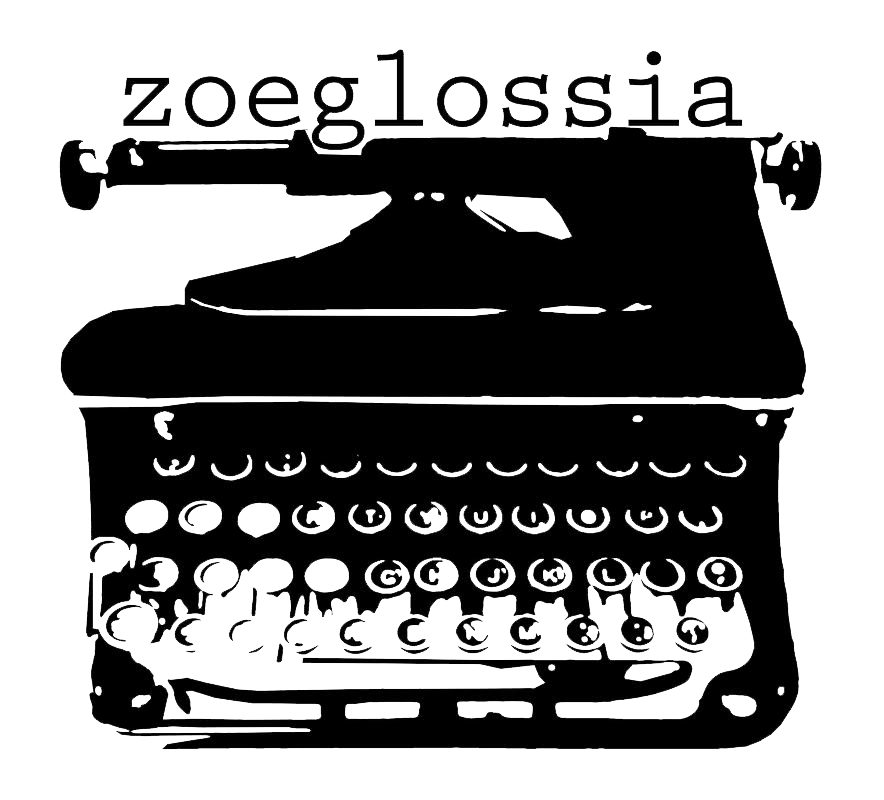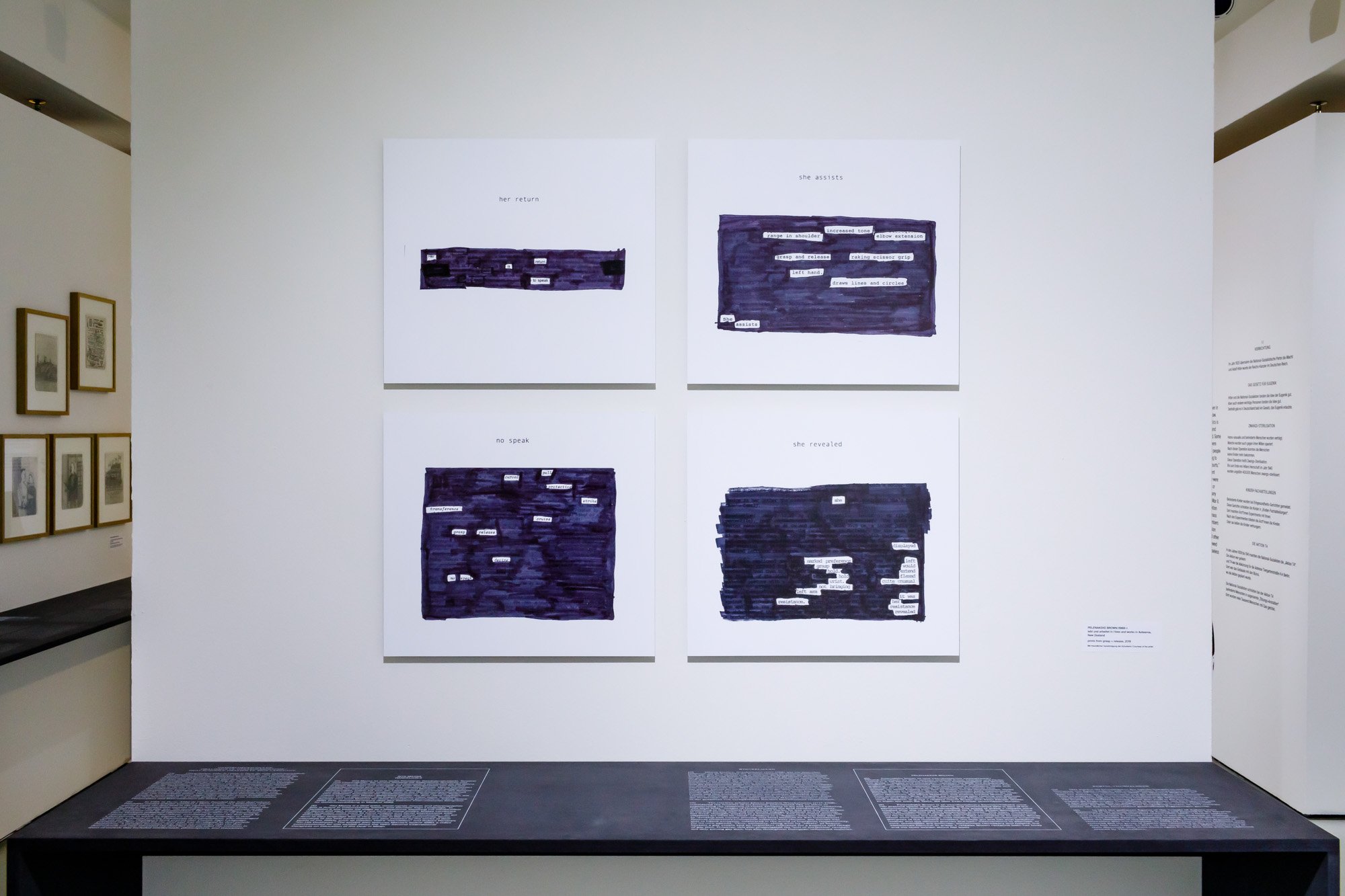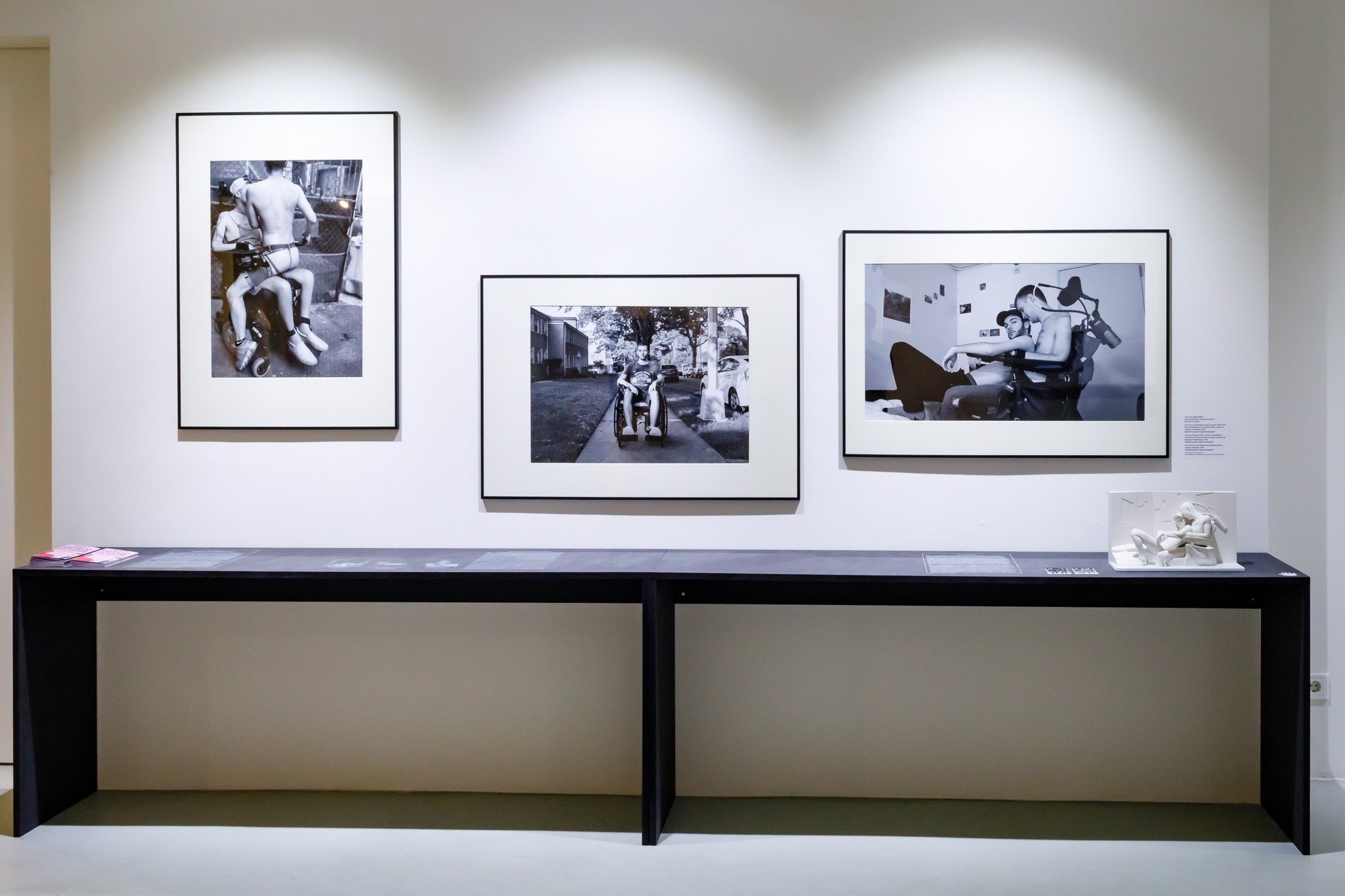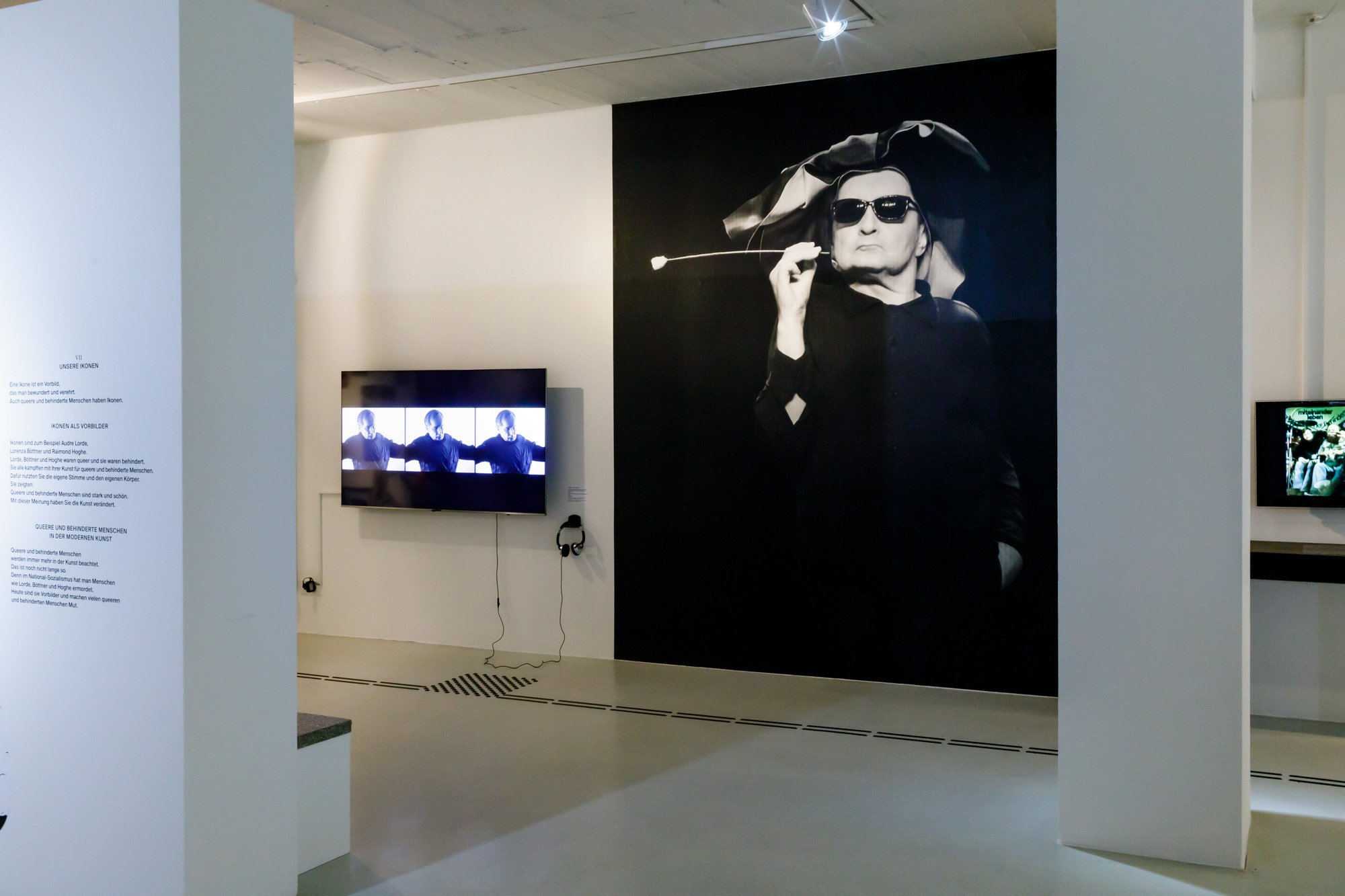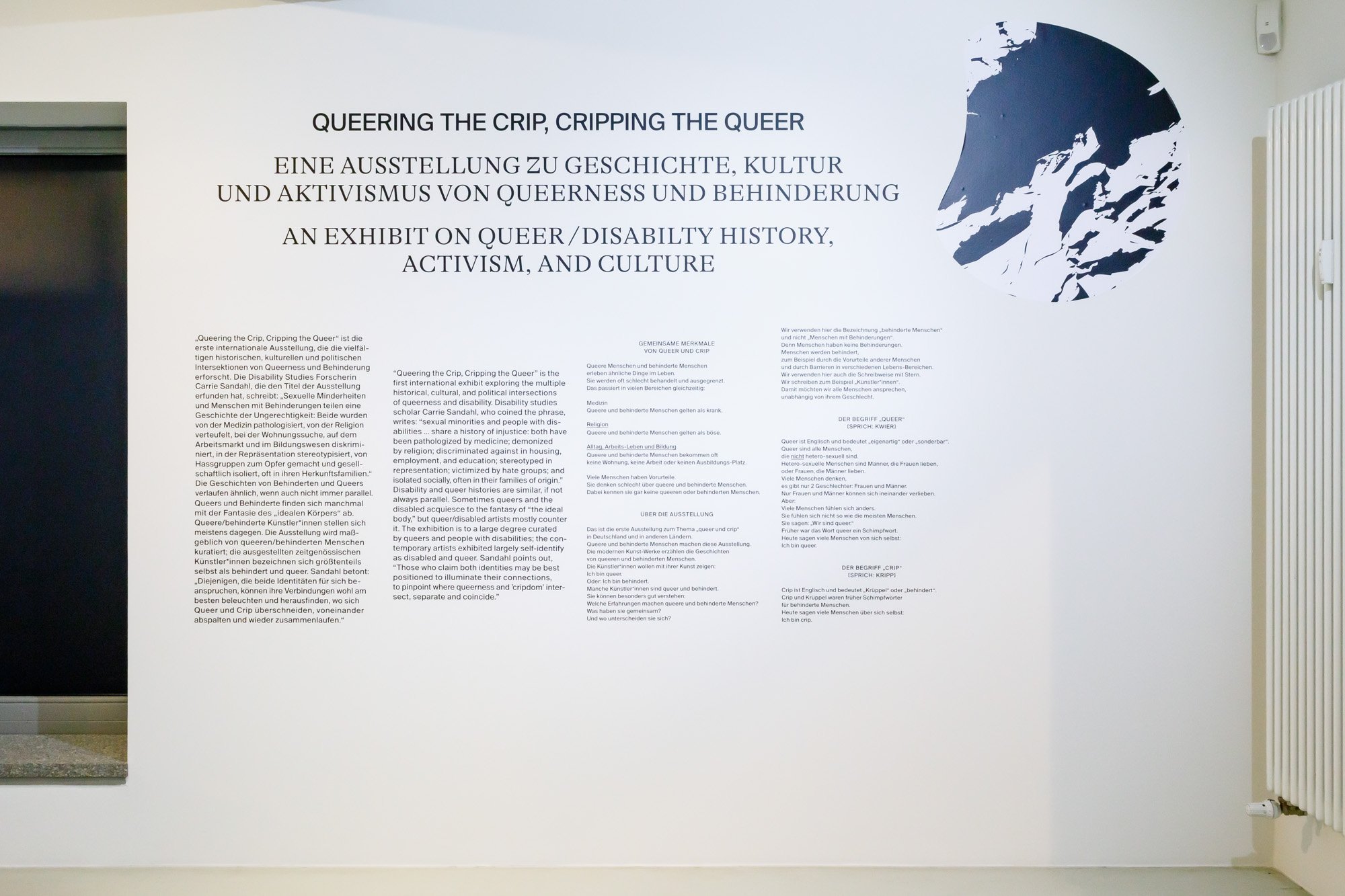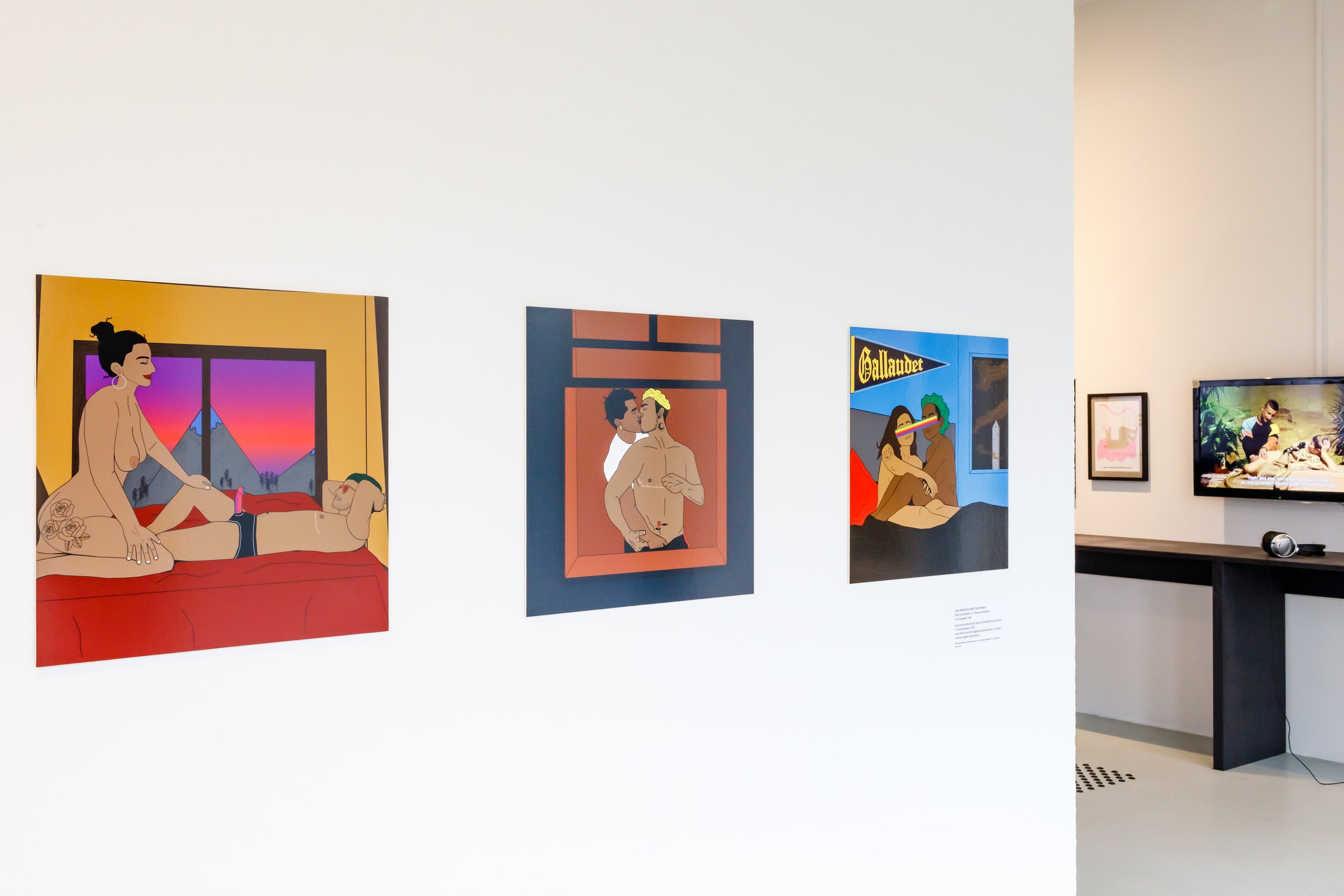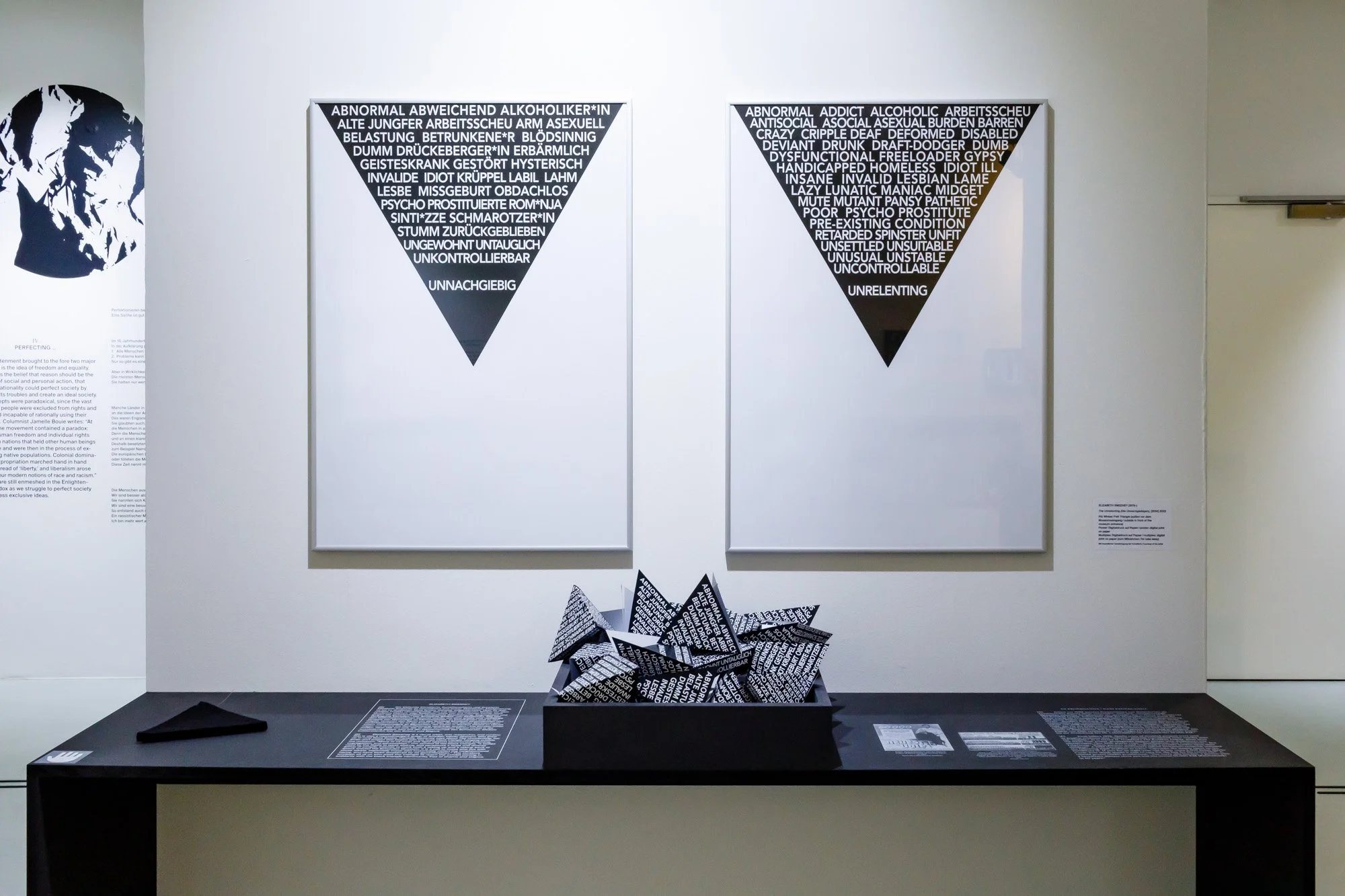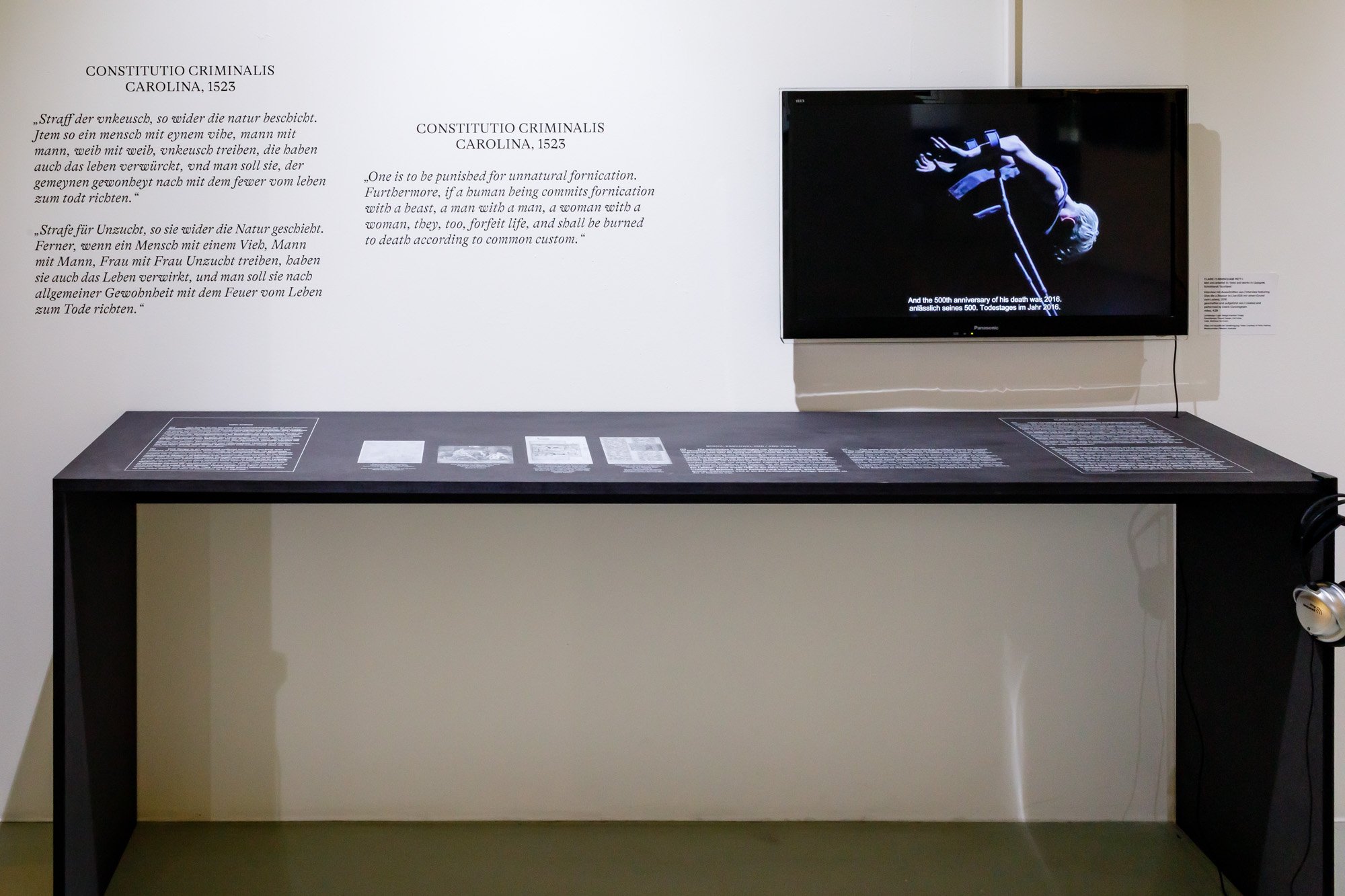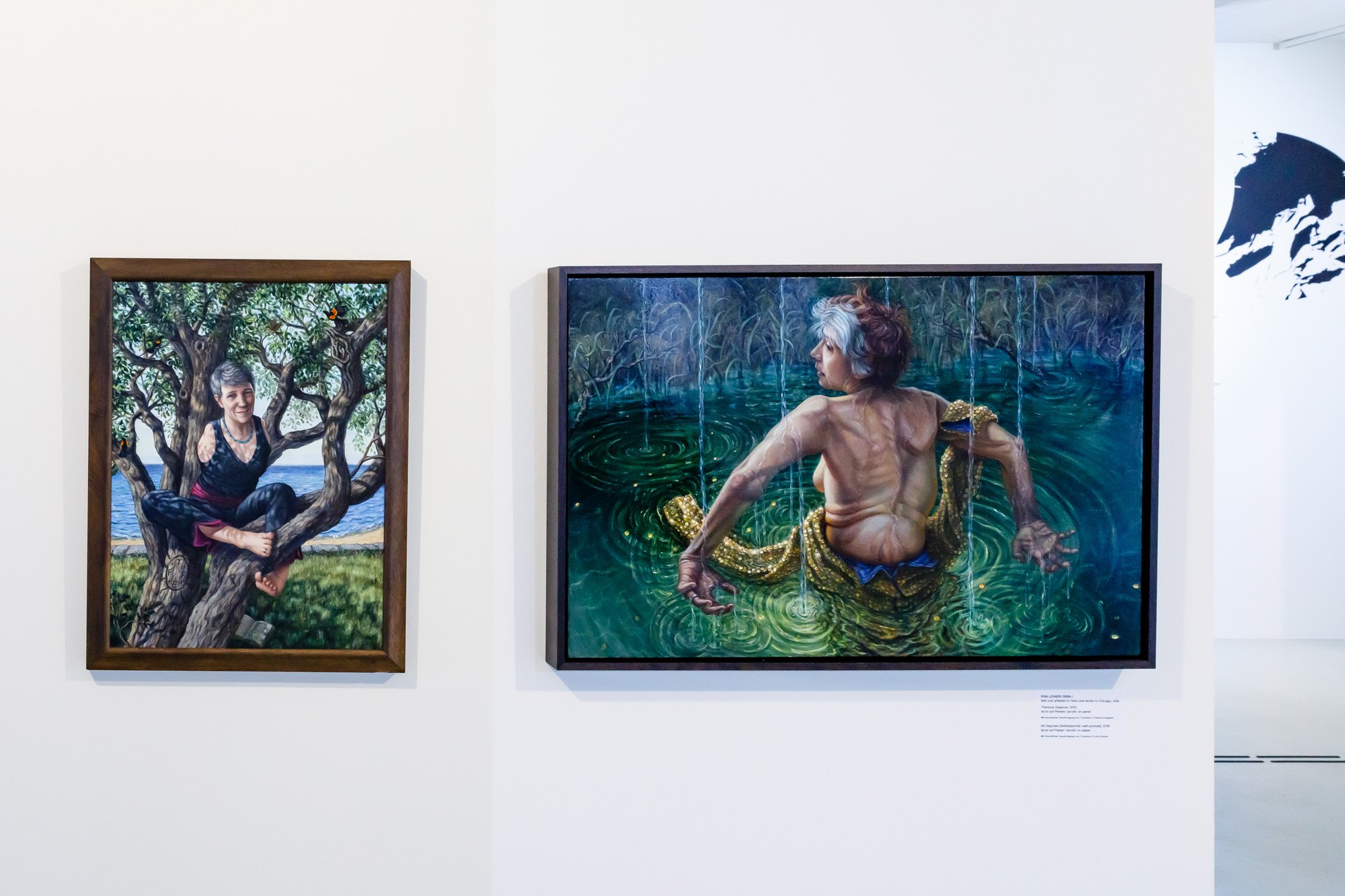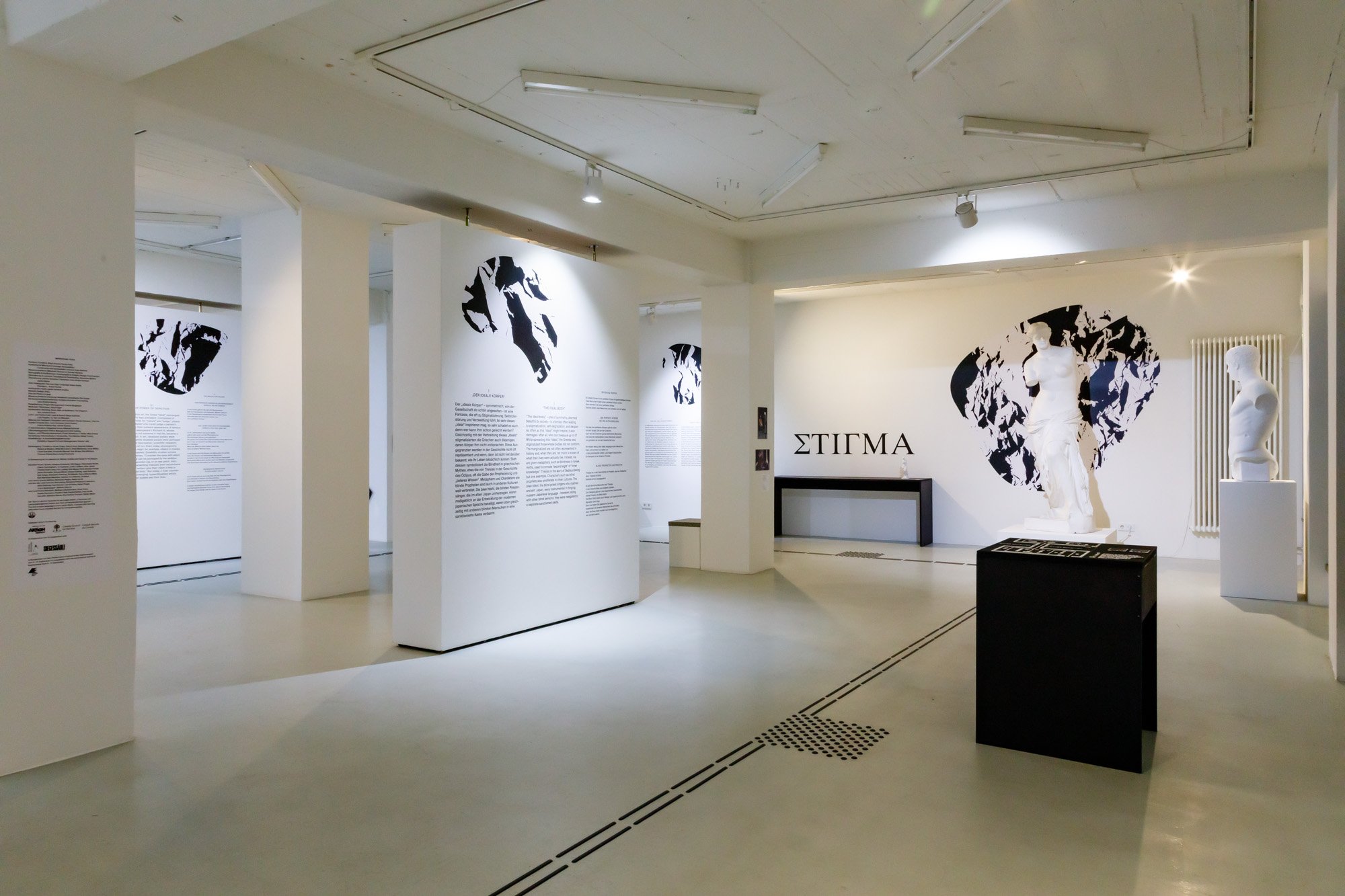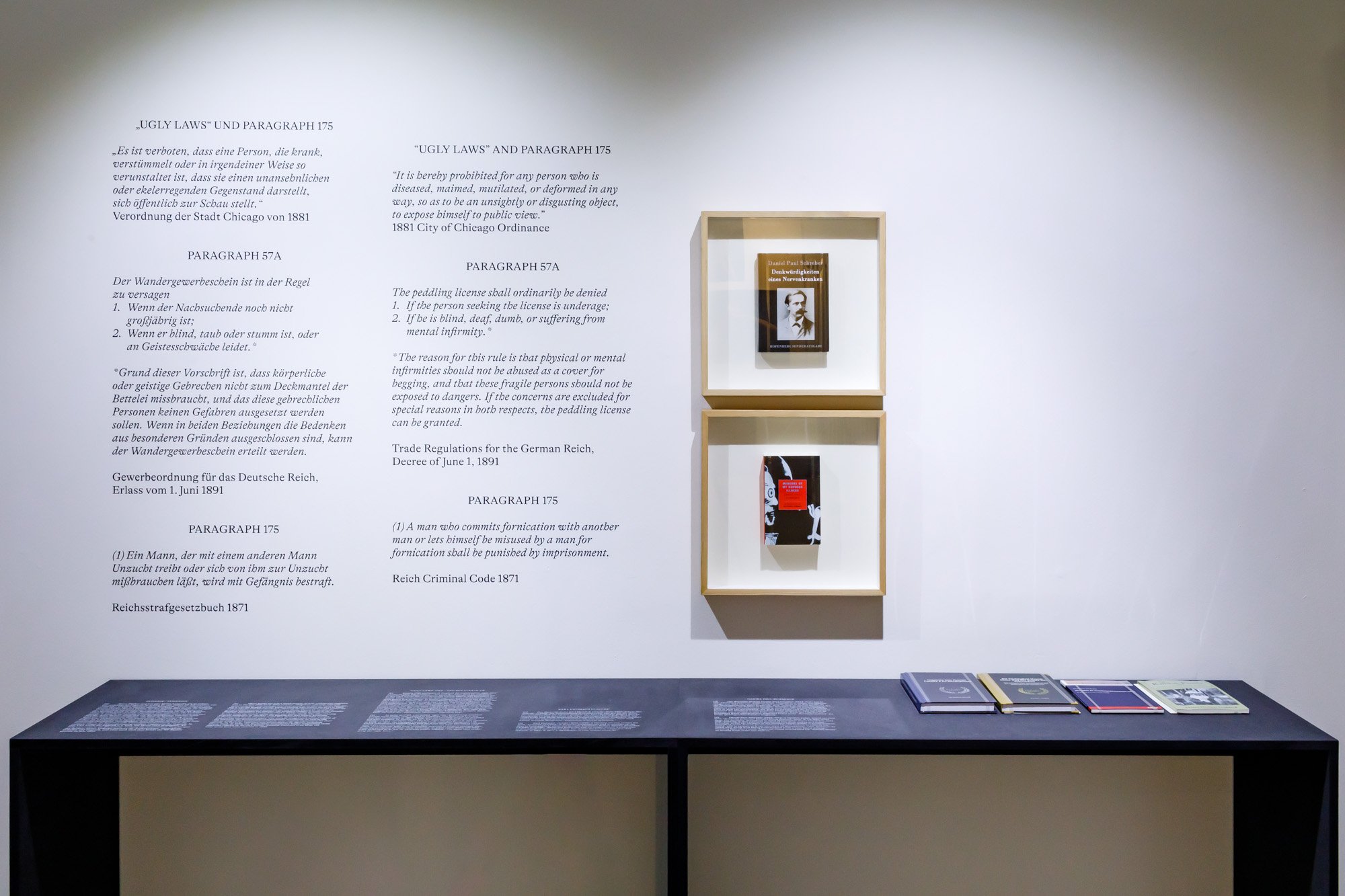Nov. 5, 2022
What Cultural Allyship Means: On the Origins of the Exhibit “Queering the Crip, Cripping the Queer”
Adapted by Kenny Fries from the exhibit opening night speech by curators Kenny Fries and Birgit Bosold
I would like to share with you the genesis of "Queering the Crip, Cripping the Queer,” the first international exhibit on queer/disability history, activism, and culture, which I’ve curated with Birgit Bosold and Kate Brehme at the Schwules Museum Berlin. The exhibit opened on September 1, 2022, and will run until January 30, 2023.
In 2015, I was invited to give a reading as part of the exhibition "Homosexuality_ies," which was held at the Schwules Museum and the Deutsches Historisches Museum in Berlin. When I visited the exhibit, I found parts of the exhibit were inaccessible because my wheelchair would not fit. Texts were placed too high on the wall for me to read. And, perhaps worst of all, there were only two very minor representations of disabled people in this major exhibit.
So, before I read from my work, I briefly but very clearly addressed this inaccessibility. What I didn't know was that Birgit Bosold, one of the curators of "Homosexuality_ies," and member of the Schwules Museum Board of Directors, was there, and would introduce me. After my reading, Birgit came over to me and said, “we should talk.” And we did.
When we talked, Birgit said to me, “You were right.” I suggested we curate an exhibit on queer/disability at the Schwules Museum. Thus, started not only “Queering the Crip” but also a valued friendship.
Because anything to do with disability has been historically marginalized, and still is marginalized today, I knew this project had to be BIG. So I developed the idea of a queer/disability performance festival with Anna Mülter, the dance curator of Sophiensaele at the time. Thus, the corresponding performance festival was born. The cooperation of two Berlin cultural institutions that had never worked together before, with their complementary and mutually reinforcing structures, allowed for significant synergy and gives the work of queer/disabled artists and our projects a strong presence in the broader public and in our communities.
The making of “Queering the Crip, Cripping the Queer” (the title comes from Carrie Sandahl’s article “Queering the Crip or Cripping the Queer?) is also the story about what allyship means: it takes allyship beyond private or personal relationships into what it can look like on an institutional level. It is crucial for an institution, such as the Schwules Museum, to live up to the claim of implementing allyship in its own programming, collections, and policies, as well as developing more accurate presentations of history and culture. The question is: how can the museum support communities to reveal their own stories? In the end, it's about setting the stage, and giving over the power to make the decisions to create, select, and present works and narratives of our own choosing. These stories not only allow us to thrive, but also deepen and enrich everyone’s understanding of the world in which we live.
In that sense, this exhibition is an important milestone for the museum. The museum has learned a lot about a lot, not only about how to ensure accessibility for all, but also about the fascinating connection of queerness and disablity, and about great queer/disabled icons such as Lorenza Böttner, Raimond Hoghe, and Audre Lorde, and their insights into our shared history.
Our story also shows how long it can take to realize an idea, from the first idea in early summer 2015 to the opening seven years later on September 1, 2022.
In "Queering the Crip, Cripping the Queer” we tell a queer/disabled story from the perspective of being queer and disabled, focusing on the work of over 20 queer/disabled international artists. We bring queer/disabled art into dialogue with both historical and current issues. "Queering the Crip" is truly a first. I hope this is just a beginning in adequately presenting the voices of queer/disabled artists in collective memory and cultural spaces.
The commitment to full access is a "must have" for most cultural institutions today. However, this rarely means anything more than having ramps or band-aid guidance systems available. Real participation necessitates that people with disabilities co-shape culture as artists, curators, museum and theater directors, critics, editors and publishers. There is still a lot of room for improvement.
Exhibition view “Queering the Crip, Cripping the Queer.” Photo: Patricia Sevilla Ciordia/Schwules Museum.
Kenny Fries is curator of “Queering the Crip, Cripping the Queer,” the first international exhibit on queer/disability history, activism, and culture, which opened on September 1, 2022 at the Schwules Museum Berlin. He is the author of In the Province of the Gods (Creative Capital Literature Award); The History of My Shoes and the Evolution of Darwin’s Theory (Outstanding Book Award, Gustavus Myers Center for the Study of Bigotry and Human Rights) and Body, Remember: A Memoir. His books of poems include In the Gardens of Japan, Desert Walking, and Anesthesia. He is a 2022 Disability Futures Fellow of the Ford Foundation, Mellon Foundation, and USA Artists.
Birgit Bosold is curator of “Queering the Crip, Cripping the Queer,” and a member of the Board of Directors of the Schwules Museum Berlin since 2006. In this function, she is particularly in charge of funding and finances and was/is significantly engaged in the strategic realignment. She was project director and co-curator of major projects such as the exhibition “Homosexuality_ies” (2015/16) and together with Vera Hofmann of the program “Year of the Woman*” (2018). In 2019, together with Carina Klugbauer, she realized a traveling exhibition on queer history in Germany on behalf of the Goethe-Institut, which has since toured the world and is also available online. After studying and earning her doctorate in literary studies, she worked for various renowned banks for many years and today operates as freelance consultant in portfolio management for companies, foundations, and private clients, as well as a lecturer and author.
